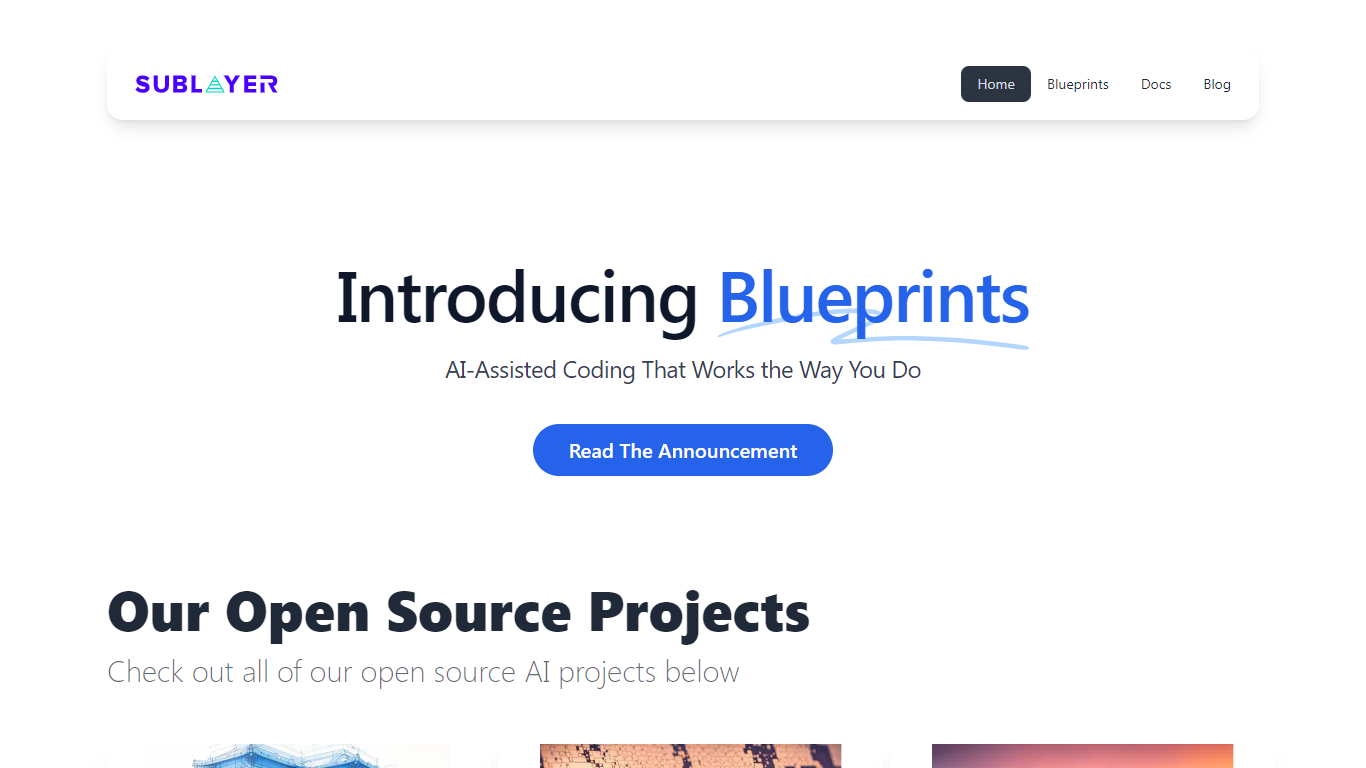Sublayer vs Codex
In the battle of Sublayer vs Codex, which AI Code Assistant tool comes out on top? We compare reviews, pricing, alternatives, upvotes, features, and more.
Which one is better? Sublayer or Codex?
Upon comparing Sublayer with Codex, which are both AI-powered code assistant tools, Sublayer stands out as the clear frontrunner in terms of upvotes. Sublayer has received 6 upvotes from aitools.fyi users, while Codex has received 5 upvotes.
Want to flip the script? Upvote your favorite tool and change the game!
Sublayer

What is Sublayer ?
Sublayer introduces a revolutionary approach to software development by integrating Generative AI into the product development process, with tools designed to enhance agile project management. Their offerings include Blueprints, an open-source AI assistant that automatically generates code by learning from your existing codebase patterns.
The Command Line AI Gem, also known as CLAG, is a RubyGem allowing developers to create command line commands using natural language directly within the terminal. Sublayer's AI Framework provides a Ruby DSL to build applications using Generative AI technologies, which underpins both Blueprints and CLAG. By joining Sublayer's community on Discord, individuals can collaborate with others to shape the future of software development. Sublayer is dedicated to open-source projects, fostering improvement through community contribution, and invites developers to view and participate in their growing catalog of projects.
Codex

What is Codex?
OpenAI Codex is the latest advancement from OpenAI, a cutting-edge AI system designed to understand and translate natural language into code. This powerful tool is now available through a private API in private beta, broadening its accessibility for businesses and developers aiming to create more intuitive natural language interfaces for their applications.
OpenAI Codex excels at a range of programming tasks, including transpilation, code explanation, and refactoring. It supports a wide array of programming languages such as Python, JavaScript, Go, Perl, PHP, Ruby, Swift, TypeScript, and even Shell, making it an incredibly versatile coding assistant. Its 14KB memory for Python code means it can handle complex contextual information with ease, offering more comprehensive coding solutions compared to its predecessor, GPT-3. OpenAI Codex not only boosts productivity by simplifying the coding process but also lowers the barrier to entry for programming, opening doors for non-coders to interact with software in a more manageable way.
Sublayer Upvotes
Codex Upvotes
Sublayer Top Features
Blueprints: Fully open-source AI assistant for generating code from existing codebase patterns.
CLAG: Command Line AI Gem for creating command line commands via natural language.
Sublayer AI Framework: Framework for building applications with Generative AI using a Ruby DSL.
Open Source Projects: A variety of AI projects available for community collaboration.
Community Engagement: Opportunity to join a collaborative space on Discord for shaping software development.
Codex Top Features
Improved AI System: OpenAI Codex is an advanced system that turns natural language into code.
Support for Multiple Programming Languages: Capable in Python, JavaScript, Go, Perl, PHP, Ruby, Swift, TypeScript, and Shell.
Larger Contextual Memory: Offers a 14KB memory for Python code, allowing for complex tasks.
Versatile Functionality: Suitable for transpilation, code explanation, and refactoring.
Accessibility through API: Released in private beta for developers and businesses to build upon.
Sublayer Category
- Code Assistant
Codex Category
- Code Assistant
Sublayer Pricing Type
- Freemium
Codex Pricing Type
- Freemium
